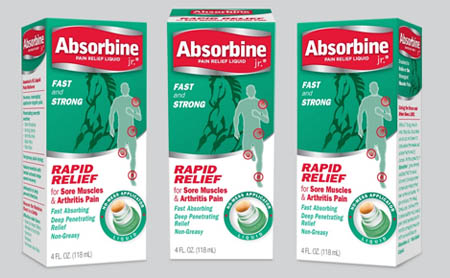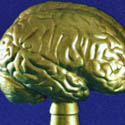WHAT’S INSIDE ABSORBINE JR.
By Patrick Di Justo | 06.09.12 11:19 AM

MENTHOL
Back when horses ruled the roads,there was a thriving industry in horse liniments-topical rubdowns for aching equine muscles. The original Absorbine was for steeds; humans got the slightly less bracing Jr. version of the pain reliever in 1903. (Now people use it mainly for achy backs.) The active ingredient is menthol; its minty freshness activates TRPM8 proteins, which are the "cold" sensors in skin. Menthol may also activate kappa opioid receptors, which alter the perception of pain (reducing it, hopefully), although it does nothing to remove the source of the ouch.
POTASSIUM IODIDE
Potassium iodide has been used to treat inflarned skin since the 1800s- and to this day, no one's really sure how it works. Some think it stimulates the release of heparin, which modulates the immune system.
CHLORO-XYLENOL
Absorbine Jr. has been advertised as an antiseptic as well as a liniment (for a time it was even a sore throat gargle). That's probably because it contains chloroxylenol, which is also used in surgical scrub brushes and antibacterial shampoos. The stuff kills germs by mucking about with their cell membranes.
ABSINTHIUM OIL AND WORMWOOD EXTRACT
According to the Book of Revelation, an evil star called Wormwood will poison a third of all waters. But the bitter wormwood shrub, also known as Artemisia absinthium, has also long been used as a mild analgesic.
THYMOL
Oh, your aching back! Inflamed tissue (the kind you'd treat with a liniment like Absorbine Jr.) can be loaded with white blood cells called neutrophils. They produce an enzyme that degrades the protein dedicated to keeping connective tissues springy. Meet thymol, the thyme extract that has been shown to disrupt calcium channels in those white blood cells, reducing their ability to spew the tissue-zapping enzyme.
CALENDULA
The Absorbine Jr. label claims that it provides sunburn relief probably thanks to this ingredient, an extract from a type of marigold flower. Calendula is so effective against the dermal effects of ionizing radiation that it's given to cancer patients going under the beam. Chemicals in the flowers-such as pentacyclic triterpenoid alcohols-help to fight skin inflammation and may encourage healing by stimulating new collagen growth.









